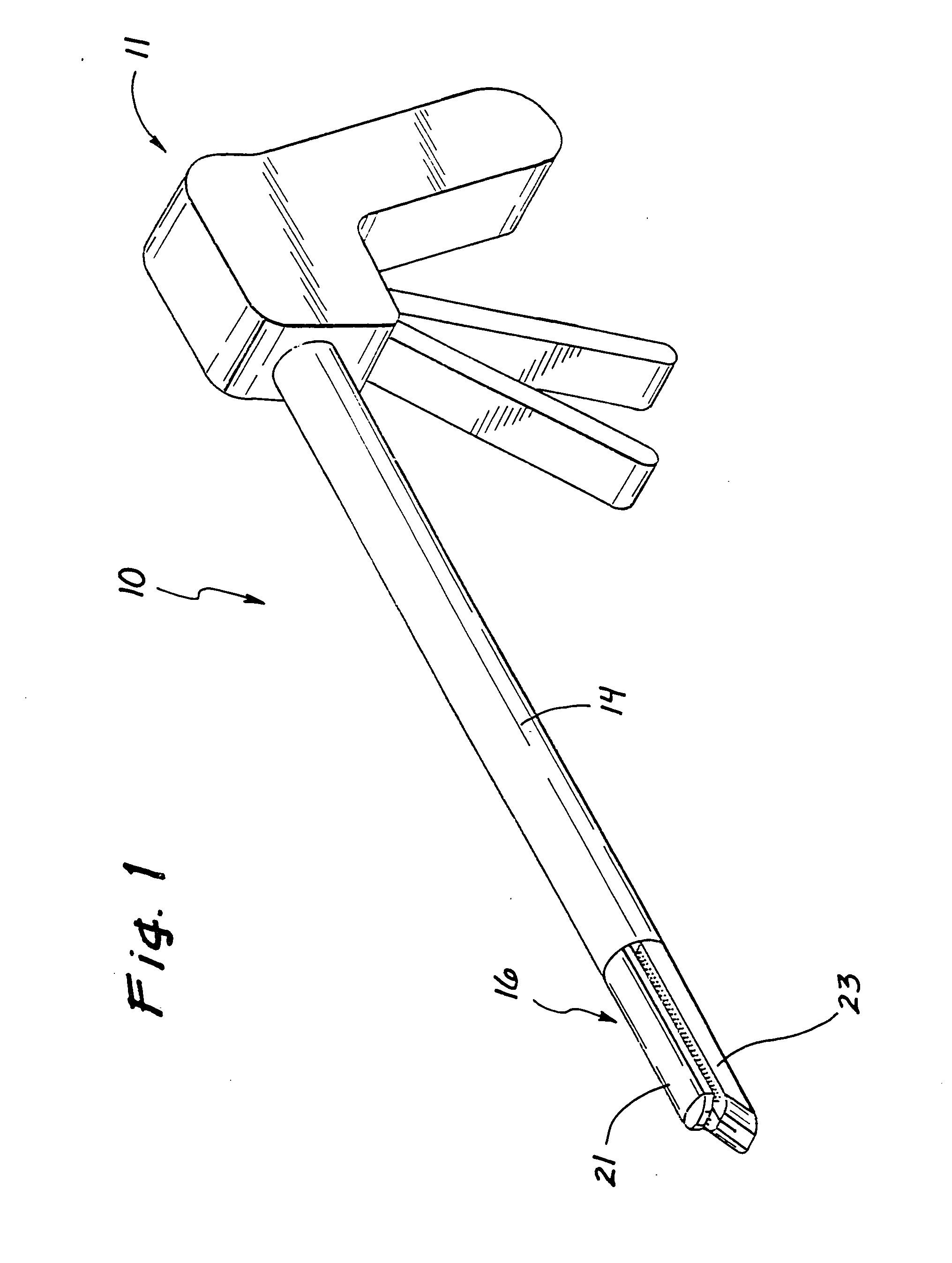Tissue fusion/welder apparatus corporation
a tissue fusion and welding apparatus technology, applied in the field of surgical devices, can solve the problems of not being able and unable to achieve the effect of reducing the number of surgical procedures
- Summary
- Abstract
- Description
- Claims
- Application Information
AI Technical Summary
Benefits of technology
Problems solved by technology
Method used
Image
Examples
Embodiment Construction
[0067] With reference to the drawings of FIGS. 1 and 2, a tissue welder 10 in one embodiment of the present invention is shown to include a handle 11, and an elongate shaft 14, and a distal portion 16. This distal portion 16 includes a pair of opposing jaws 21 and 23 which are adapted to compress tissue 18, having outer surfaces 19 that define deep inner portions 20.
[0068] In the illustrated example, the compressed tissue 18 has the configuration of a tube where one side of the tube is compressed into a surface proximate relationship with the other side of the tube in order to occlude the tube. It will be appreciated that the invention is equally adapted to bond any two pieces of tissue disposed in a tissue proximate relationship.
[0069] One of the opposed jaws 21 is configured to have a plurality of penetrating members or needles 25. The opposite jaw 23 provides a stop or a contact member against which the penetrating members 25 can be moved. Energy is delivered to, and through, t...
PUM
 Login to View More
Login to View More Abstract
Description
Claims
Application Information
 Login to View More
Login to View More - R&D
- Intellectual Property
- Life Sciences
- Materials
- Tech Scout
- Unparalleled Data Quality
- Higher Quality Content
- 60% Fewer Hallucinations
Browse by: Latest US Patents, China's latest patents, Technical Efficacy Thesaurus, Application Domain, Technology Topic, Popular Technical Reports.
© 2025 PatSnap. All rights reserved.Legal|Privacy policy|Modern Slavery Act Transparency Statement|Sitemap|About US| Contact US: help@patsnap.com



